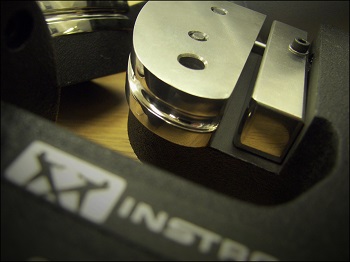Instron, a leading provider of testing equipment designed to evaluate the mechanical properties of materials and components, offers an easy solution designed specifically to overcome the problem of premature failure for industrial textile fibres – including Aramid and UHMwPE.
Instron Pneumatic Cord and Yarn Grips (2714-04x), which test up to 2 kN, are designed with interchangeable clamping blocks that accommodate fibers or yarns made from conventional fibers or newly developed high-performance fibers.
This cost-effective new feature allows customers to utilize the same grip body as the common actuator and carrier for a range of application-specific clamping blocks. Whereas before the addition of the interchangeable clamping blocks, it was necessary for a lab to purchase a full set of grips, with grip bodies, grip faces, and single purpose capstans.

Aramid and UHMwPE are synthetically prepared fibres that are stronger per weight than steel. However when tested with a traditional side acting grip, they are likely to exhibit internal slippage in the jaw, where one or more fiber is slipping past the others. The fibres are also likely to fail where stress is concentrated at the jaw faces. This kind of challenge is much harder to detect and can lead to low maximum strengths and/or inaccurate results.
The Pneumatic Cord and Yarn Grips incorporate a capstan design that evenly distributes the gripping force over the curved surface of an involute specially designed to maximize breaking load.
The capstan provides support for the specimen, making the transition from the free-stressed length of specimen to the rigidly clamped portion gradually rather than abruptly, thus minimizing breakage of the specimen adjacent to the jaw face. The capstan also incorporates a smooth guide horn, which assists in rapid specimen loading and prevents damage to individual fibers during specimen insertion. This allows for greater failure loads to be recorded.
Additionally, the clamping mechanism can be activated automatically and through a footswitch to allow for two-handed specimen insertion and hands-free grip operation; this enables the operator to hold the specimen with both hands for easy loading.
Pneumatic Cord and Yarn Grips provide selectable clamping force to accommodate different materials and excellent follow up action that compensates for decay of the holding force due to specimen creep. For more information, visit Instron's website.